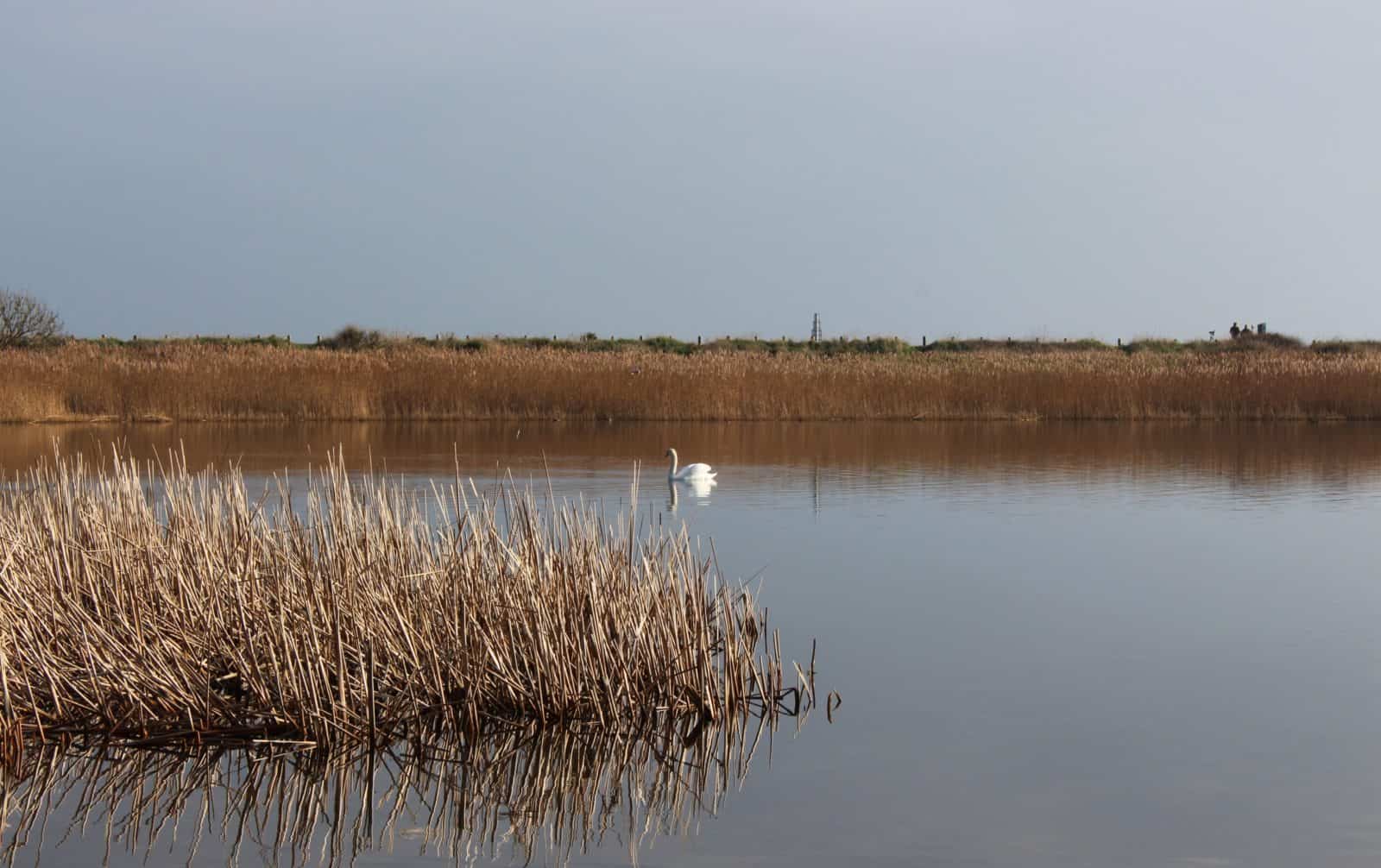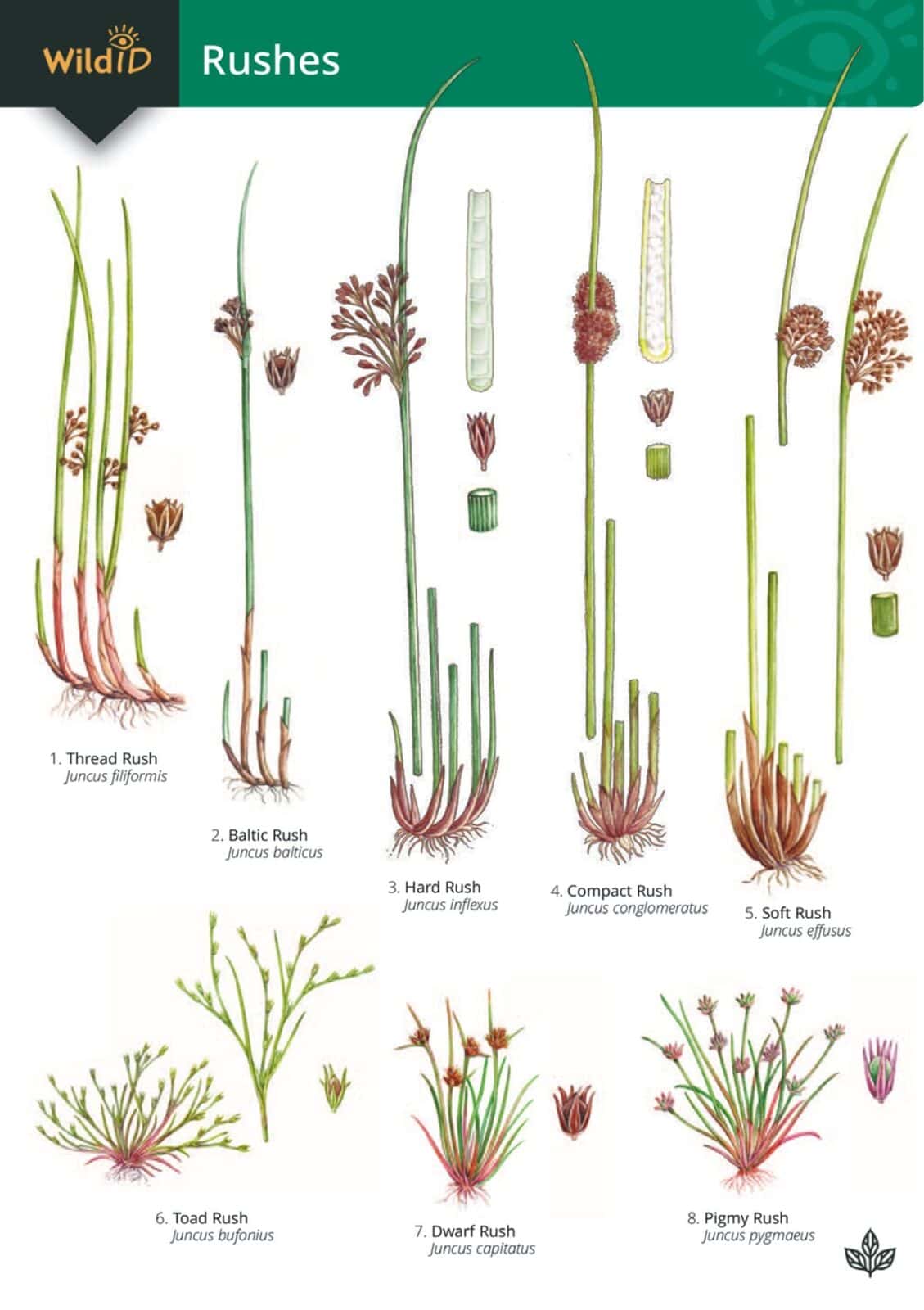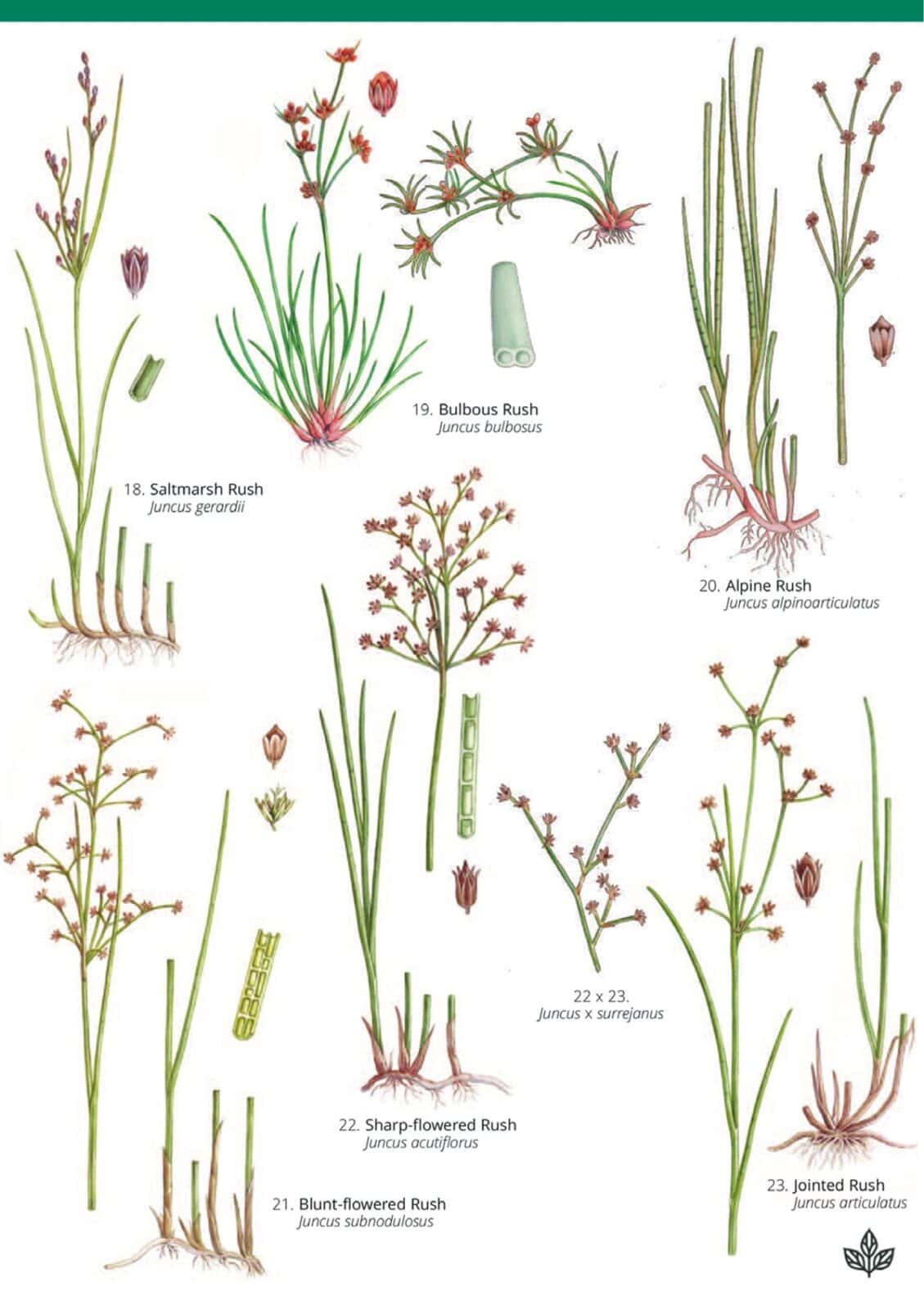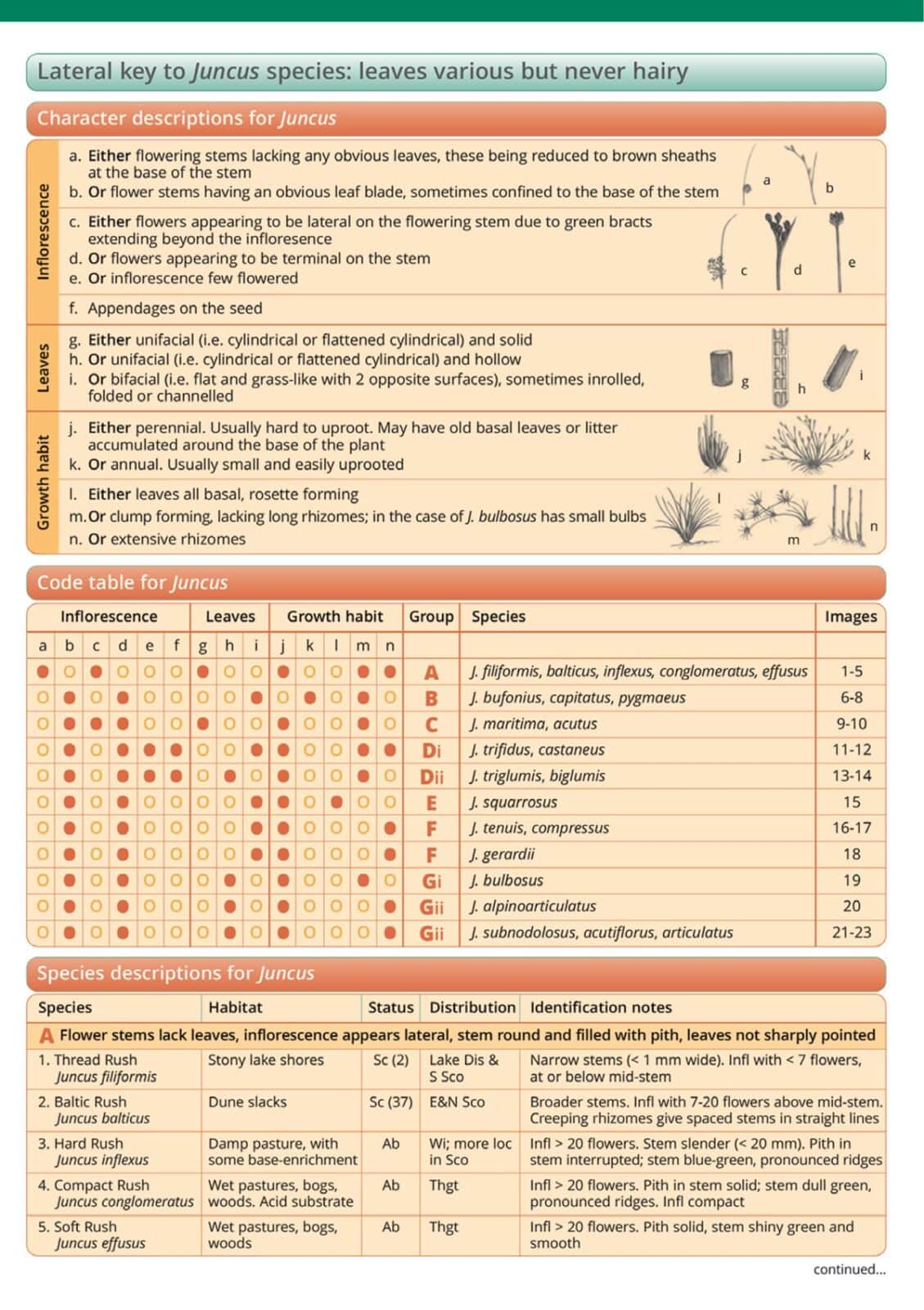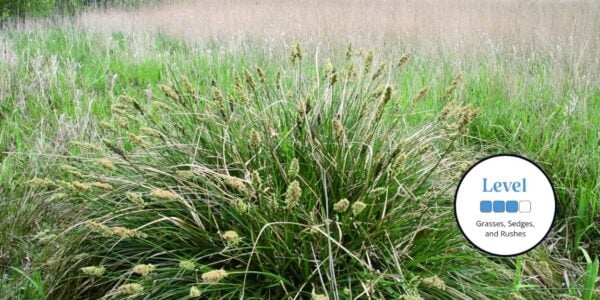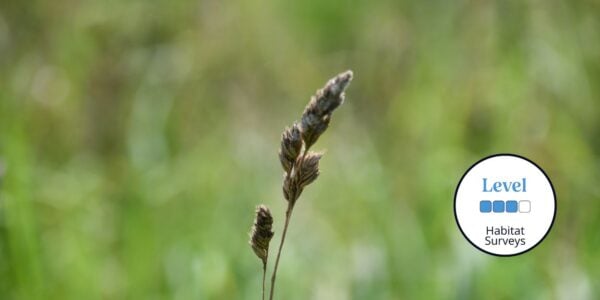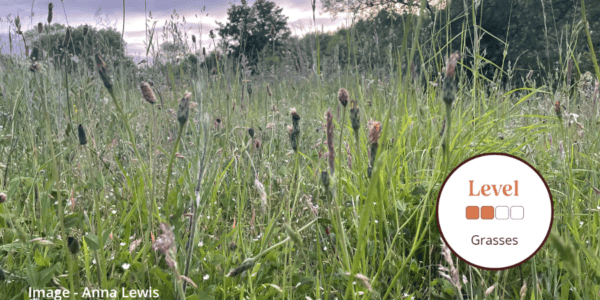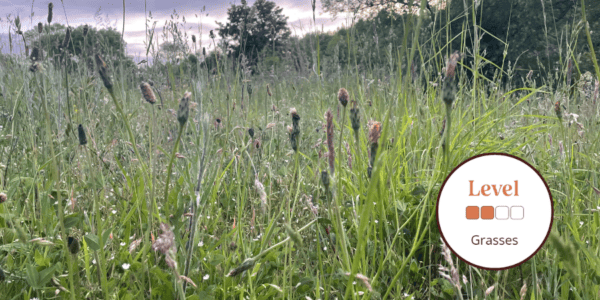Rushes guide
The FSC Rushes guide features 32 species of rushes and wood-rushes found in Britain and Ireland.
This identification guide covers the rush family Juncaceae. These monocotyledonous herbs are often confused with grasses or sedges. There are two genera:
- Juncus (rushes). By and large these are herbaceous perennials characteristic of damp to aquatic habitats, with a few annual species of bare, damp, open habitats.
- Luzula (woodrushes). Perennials generally found in drier, shaded habitats; and occasionally in meadows and other damp grasslands and heaths.
Clear colour illustrations include many magnified views of key diagnostic features, such as flower heads, stem pith and seed shape. Accompanying text on the reverse side includes two separate lateral keys, to each of the genera Juncus and Luzula.
These two genera have distinct vegetative characteristics. Juncus species have hairless leaves, which take many different forms (solid or hollow; narrow, linear or like a grass blade). In contrast Luzula species have hairy leaves, more or less flat or folded. There are also distinct habitat differences. Juncus species almost occur in damp places. Many are perennials, and form important structural components of a wide range of grassland communities including saltmarsh, fen, and neutral and calcareous grassland. There are also a few annual species which colonise damp disturbed ground. Luzula species are all perennials and most species are generally confined to woodland or shady hedgerow habitats, although some are grassland species.

